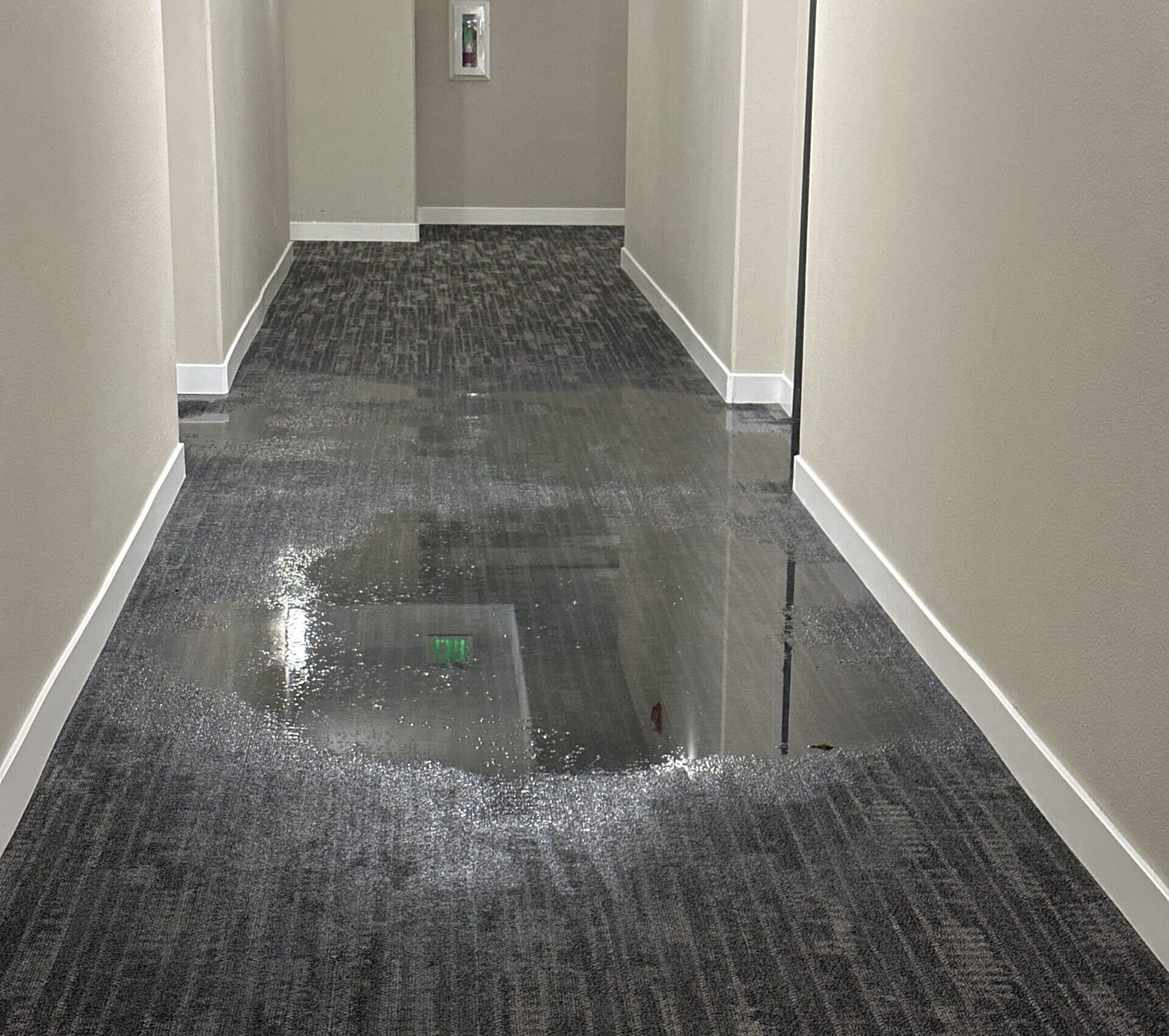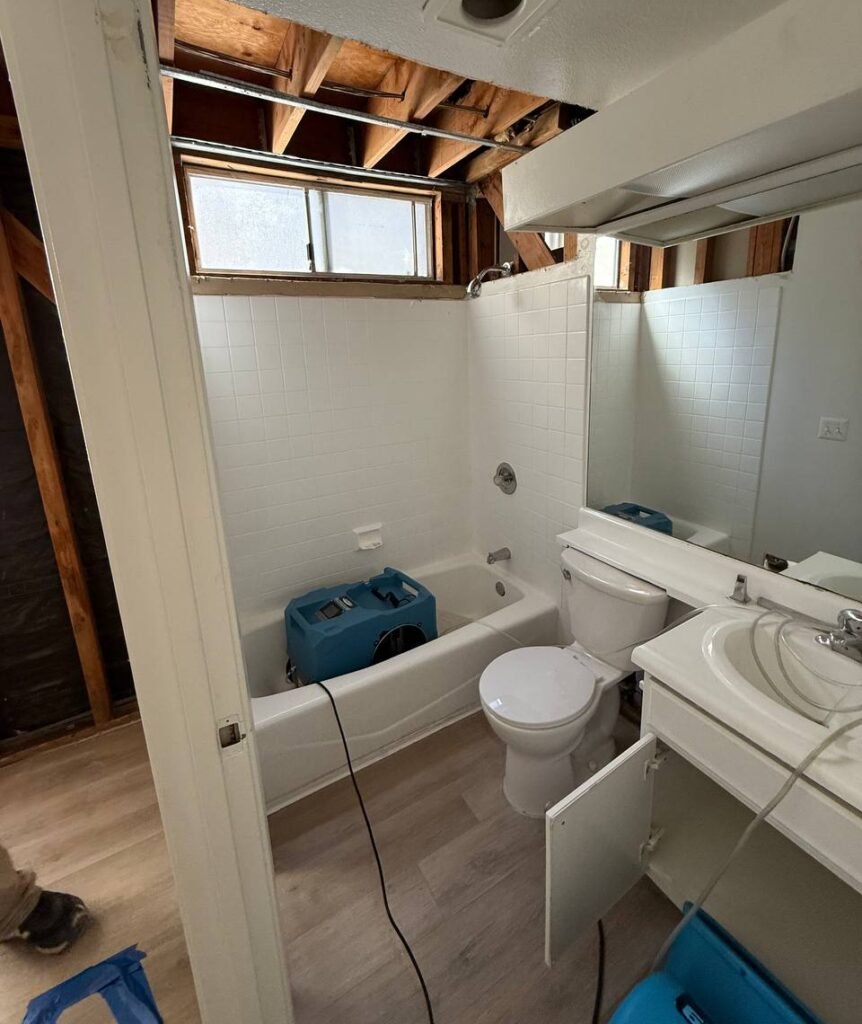Water Damage Restoration in Pasadena, CA | 24/7 Cleanup & Drying
Pasadena’s housing ranges from historic Craftsman bungalows to hillside homes in Linda Vista and San Rafael, plus pre-war apartments near Old Pasadena. Tile roofs, balconies over living spaces, and older plumbing create specific water risks. When a roof detail fails or a supply line bursts, water moves through plaster, hardwoods, and built-ins quickly. Onsite Pro Restoration responds 24/7 with certified crews, commercial extractors, and an IICRC S500 process that limits loss, prevents mold, and speeds insurance approvals.
Get Started
Service Form
Why Water Damage Happens Here
Tile Roofs, Balconies, and Complex Flashing
Clay and concrete tile roofs are common. Wind-driven rain can bypass underlayment at valleys and penetrations. Balconies and roof decks over living rooms pond at scuppers, sending water into ceilings below. Once insulation wets, odor and microbial risk rise without controlled dry-down.
Aging Supply Lines, Angle Stops, and Slab Leaks
Original copper or galvanized lines and older valves are frequent culprits in Craftsman kitchens and laundry closets. Under-slab leaks wick into sill plates and flooring. Hidden moisture behind toe-kicks and baseboards requires mapping and cavity relief.
Window and Stucco Intrusions
Older window assemblies and hairline stucco cracks let rain track behind paper and into sheathing. Weeks later it shows as interior staining along lower walls or built-ins.
Mechanical Rooms and HVAC Condensate
Clogged condensate lines and pan overflows wet framing around air handlers. Tight utility rooms trap humidity and slow natural drying.

Our IICRC S500 Water Restoration Process
Emergency Response and Scope
Live dispatch 24/7. We secure the source, then map wet materials using pin/pinless meters and thermal imaging. Scope follows S500 so you know what will be dried, opened, or removed. We discuss access, lead/asbestos rules for pre-1978 materials, and any HOA or historic constraints.
Rapid Extraction
Truck-mounted and portable extractors remove standing water from tile, stone, hardwood, and carpet. We lift carpet and remove pads where needed. Baseboards or toe-kicks are pulled to relieve wet wall cavities and stop wicking.
Containment and Protection
Poly containments with zipper access isolate work areas. HVAC supplies/returns in the zone are sealed. We protect stairs, millwork, and flooring to keep clean areas clean, especially in homes with historic finishes.
Structural Drying to Targets
Commercial dehumidifiers and air movers create a controlled system. Wall-cavity drying, floor tenting, and directed airflow bring materials back to target moisture content. We log baseline, daily, and clearance readings and share them with you and your insurer.
Cleaning and Targeted Antimicrobial
We clean salvageable non-porous and semi-porous surfaces. Targeted antimicrobial is applied where appropriate to reduce secondary microbial growth. No “spray-and-hope” shortcuts.
Monitoring, Documentation, and Handover
You receive photos, moisture maps, equipment logs, and an itemized Xactimate estimate. Insurer-formatted documentation reduces pushback and accelerates decisions.
Specialty Care for Pasadena Materials and Assemblies
Plaster, Lath, and Historic Trim
Plaster retains moisture longer than drywall. We use lower-stress airflow and selective opening where readings demand it. Historic casings, wainscoting, and built-ins are protected and, where feasible, preserved. Where plaster is sound with shallow wetting, in-place drying and cleaning may suffice; delamination or deep saturation requires removal.
Hardwood, Engineered, and Inlay Floors
We deploy floor-drying mats and staged dehumidification to limit cupping and gapping. Engineered boards with swollen cores are documented for replacement. Subfloor moisture is verified before reinstalling or refinishing.
Stone and Tile Over Mortar Beds
Pasadena homes often use stone over mortar beds. We manage vapor to limit efflorescence and staining. Non-destructive meters confirm drying beneath dense finishes. Where assemblies trap water, we plan minimal-impact relief points.
Cabinets and Built-Ins
Toe-kick removal and cavity ventilation speed dry-down without full cabinet removal when structure allows. If panels or veneers delaminate, we document selectively for replacement while saving doors and faces where possible.

Insurance Support for Pasadena Homeowners
Xactimate estimates aligned with carrier formats.
Evidence package with photos, moisture logs, and scope notes.
Direct adjuster communication to reduce re-inspections and delays.
Most policies cover sudden and accidental water damage (burst lines, appliance failures, storm intrusions). Long-term leaks and maintenance issues can be limited. Our records tie cause, extent, and dry-down to policy terms.
Costs and Variables (Typical Ranges, Not a Quote)
Actual pricing depends on size, materials, access, and verification needs:
Emergency response/site visit: often credited to work; stand-alone $0–$250.
Extraction: $0.30–$0.75 per sq ft based on volume and flooring.
Containment and protection: $150–$600 per chamber.
Equipment per day: air mover $25–$45; dehumidifier $75–$125; HEPA negative-air $95–$165.
Selective demolition (if needed): drywall removal/haul-off $2.50–$5.50 per sq ft; wet insulation removal $1.50–$3.50 per sq ft; baseboard/toe-kick remove/replace $6–$12 per linear ft.
Cleaning and antimicrobial: $0.20–$0.50 per sq ft treated.
Moisture monitoring/documentation: typically included within daily service lines.
We provide line-item scopes with photos and readings so you can see what you are paying for and why.
Case Study: Balcony Leak in Madison Heights
Situation
After winter storms, a second-floor balcony over a living room developed a hidden membrane failure. Ceiling staining appeared near a built-in media wall. Moisture mapping found wet insulation and ~280 sq ft of affected drywall. Adjacent baseboards showed elevated readings.
Mitigation
Built room containment with a HEPA negative-air machine; sealed HVAC registers and protected floors and millwork.
Performed controlled ceiling demo and removed saturated insulation where readings required.
HEPA vacuumed and mechanically cleaned framing; applied targeted antimicrobial.
Established a closed drying system with dehumidifiers and air movers; logged daily readings for the owner and insurer.
Outcome
Dry goals achieved on day 4. Odor resolved by day 2 after source removal and cleaning. Roofing contractor corrected membrane seams and scupper detail. Rebuild included drywall, texture blend, paint, and millwork touch-ups.
Lesson
Balconies over living space need routine inspections of membranes, flashings, and drains before storms. Without maintenance, small defects become interior losses.
Timeline You Can Expect
Inspection + extraction: same day.
Drying phase: typically 3–5 days depending on saturation, materials, and indoor RH.
Documentation: updated daily; shared with you and your insurer.
Repairs: scheduled after targets are met. Typical scopes include drywall/texture, insulation, paint, flooring repair or replacement, and trim.
What To Do Before We Arrive
Shut off the main water valve if safe.
Do not power wet circuits or fixtures.
Lift furniture onto blocks or foil to prevent staining and swelling.
Avoid opening bulging ceilings; saturated drywall can fail suddenly.
In pre-1978 homes, do not disturb painted materials until lead/asbestos rules are addressed.
Prevention for Pasadena Homes and Buildings
Roof and balcony membranes: clear scuppers and drains; inspect seams and flashings before storms.
Plumbing: replace aging angle stops and supply lines; install a pressure regulator if PSI is high.
Windows and stucco: seal cracks, maintain flashing, and check sills after wind-driven rain.
Mechanical systems: service HVAC condensate drains and pans; add float switches and leak alarms.
Ventilation: vent baths and laundry to exterior; use humidity-sensing controls.
Moisture verification: after any leak, confirm target moisture before closing walls or refinishing floors.
Crawl spaces/landscaping: redirect irrigation, improve grading, and increase airflow where needed.
We serve Pasadena, Bungalow Heaven, Old Pasadena, Madison Heights, Linda Vista, San Rafael, South Arroyo, East Pasadena, and nearby San Marino and Altadena. Dispatch runs 24/7, including weekends and holidays.
Explore More Restoration Services in Pasadena
Pasadena Sewer Damage Cleanup
Biohazard and sewer cleanup.
Pasadena Fire Damage Restoration
Fire and smoke restoration services.
Pasadena Mold Remediation
Free inspections and certified mold removal.
Pasadena Hub Page
Explore all restoration services in Pasadena.
